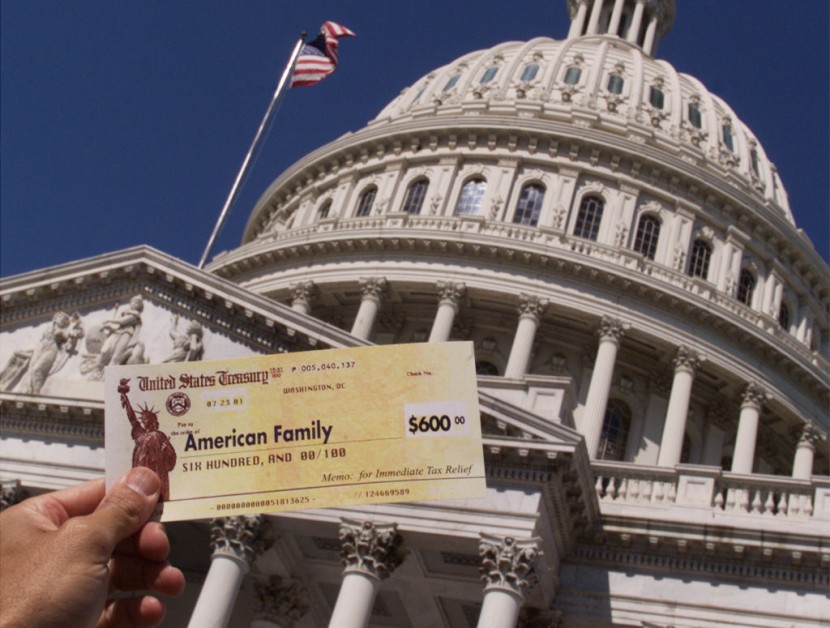
If taxpayers did not pay enough taxes in 2022, there isn't much time left for them to escape a "surprise" penalty.
According to the Internal Revenue Service, the payment deadline for the fourth quarter's anticipated taxes is January 17. Those who file after that deadline run the danger of having to pay a "unexpected possible tax burden" when they submit in 2023.
How to Avoid Getting Surprise Tax Bill?
The IRS stated earlier this month that "any payment option - withholding or anticipated tax payments - or a combination of the two, might assist avoid a surprise tax bill at tax time and the associated penalty that frequently applies."
Americans have two options: they can withhold taxes from their paychecks or they can send the IRS anticipated tax payments four times a year. Additionally, taxpayers have the option of selecting both. If you don't make the payments, you could end up owing up to 25% in total interest plus a penalty of 0.5% on the total amount you owe.
Experts advise paying as much as you can by the deadline rather than delaying payment of the full tax bill in order to reduce the potential penalty if you are unable to make the full payment.
The choice is available for a variety of sources of income, including self-employment, investments, and gig economy labor. Because no tax is routinely taken from their pay, independent contractors, freelancers, and gig workers typically use it. A few small businesses, landlords, and independent contractors also benefit from the practice, according to Fox News.
A taxpayer can be assessed a penalty if they neglected to make a necessary quarterly payment this year. However, paying by the deadline of January 17 could help to reduce or even eliminate any cash cost payable to Uncle Sam.
According to the IRS, using a program called Direct Pay electronically is the quickest way to send a quarterly payment. The payment can be scheduled in advance by the taxpayer. Individuals may, however, also use their IRS Online Account or the Electronic Federal Tax Payment System to make payments electronically. On its website, the IRS offers additional payment methods.
The IRS will start receiving individual tax returns on January 23, which marks the start of the 2023 tax season. Most taxpayers must file their taxes by April 18 or ask for an extension by doing so.
Read Also : Social Security Payments to Arrive in 2 Days
Delayed Tax Refund?
You can check the status of your refund by logging into the income tax e-filing portal if you haven't received it yet. To examine the refund status, you must take the actions listed below, as per OutlookIndia:
- Visit the income tax e-filing portal first, then use your login information to access your account.
- Next, select e-File>Income Tax Returns>View Filed Returns from the menu.
- Third, if you want to check the refund and ITR status, you must go to the pertinent assessment year.
- Fourth, a new window will open and show the details as well as the status of your return.
- Fifth, the status "Processed with" will appear if your ITR is processed but no refund is given.
Beginning on January 23, the Internal Revenue Service will begin receiving and processing returns for the 2022 tax year. Before the April 18 deadline, more than 168 million individual tax returns are anticipated to be completed, giving the tax office a monumental task to complete. However, there is optimism that this year's filing season would proceed much more successfully than the three before it, which were all adversely affected by the pandemic.
According to AS.com, the federal government has provided more money to the IRS this year so that the procedure may be finished quickly. If a taxpayer chooses the direct deposit option while filing electronically, the IRS wants to ensure that they receive their refund within 21 days of filing.
However, even though the IRS is scheduled to begin processing returns on January 23, it won't start giving refunds to anyone who have qualified for the Earned Income Tax Credit (EITC) or Additional Child Tax Credit (ACTC) until around the middle of February.
The tax authority has experienced chaos over the last few years as a result of COVID-19's interference in various ways. The pandemic that struck in 2020 during tax season forced IRS employees to abandon the office and ended any in-person service. The administration of several pandemic-era relief measures, including stimulus payments and the enhanced Child Tax Credit, fell to the IRS in the years that followed.
A sizable backlog of unprocessed returns that were many years old amassed as a result of that disturbance. President Biden included increased cash for the IRS in the Inflation Reduction Act passed last year in an effort to strengthen the agency's capabilities.
Related Article : Social Secuirty: Why You May Receive Smaller Amount?
@YouTube
© 2025 HNGN, All rights reserved. Do not reproduce without permission.








